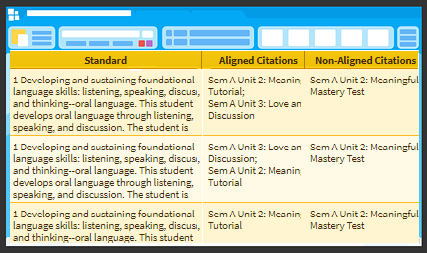In a recent article titled, “Four Ways State Leaders Can Help Teachers Implement High Quality Curriculum,” the author discusses how state policymakers can support the reopening of schools for a successful school year. She encourages policymakers to “Provide clear and simple guidance to ensure all content is standards-aligned and offer examples of what that may look like for in-person and virtual settings.”

As districts searched for new online materials to support at-home learning, technology compatibility may have driven their purchasing decisions. Now that they are having to use the materials, alignment should be an important consideration. Here are three reasons why understanding the standards alignment of materials being used for at-home learning is critical to students’ academic success.
(1) Teachers will likely rely on their materials more heavily than they may have in the past to ensure that remote learners keep pace with students who are attending class in-person. If the materials are not well aligned to all of the grade level standards, remote students will develop learning gaps.
(2) Few materials are aligned to a 100% of the grade level standards, and even fewer products align to each standard everywhere the publisher claims them to. In order to ensure that students are learning all of the knowledge and skills each standard requires, teachers should be aware of where the material covers each standard completely (i.e., is aligned to the standard) and where the material has gaps.

(3) Whether to fill a material’s alignment gaps or to help them differentiate instruction for particular students, teachers will likely want to incorporate activities and quizzes from multiple materials in their lessons. To ensure that they are helping students learn all grade level standards, teachers need to know which standards each material is aligned to and whether, in the aggregate, the materials they are using align to all grade level standards.
Students cannot learn what they are not taught. As referenced in the recent article cited above, educators need to ensure that their materials are aligned to their state’s standards and they need to know what standards-aligned materials look like.
Learning List’s alignment reports list citations (i.e., lessons, activities, assessments, and other resources) in each material that multiple certified educators have verified to be aligned to the content, context, and cognitive demand of each standard. These verified citations not only guide teachers to the parts of each material to use to help students learn the standards, they also provide exemplars for what standards aligned instruction looks like. Contact us to learn more.